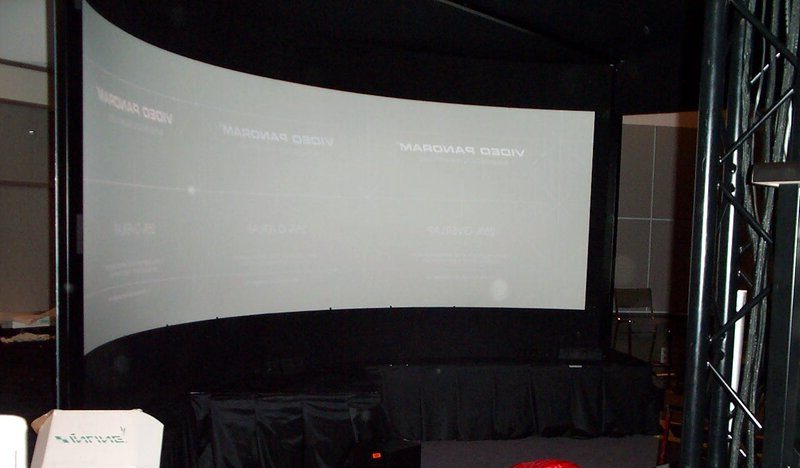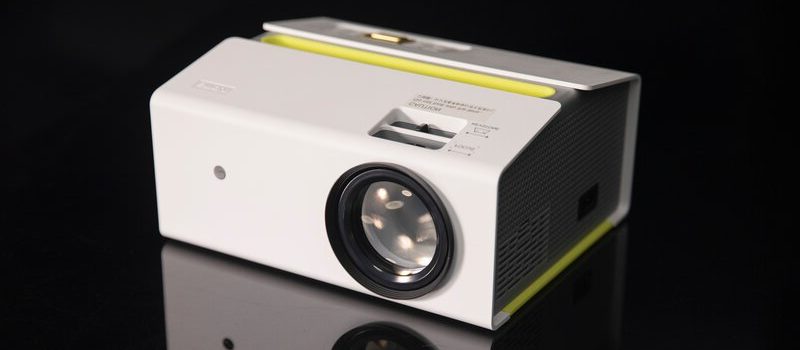The projector makes colors to form colorful and authentic moving images on the screen. You can see multiple light beams such as red, white, or blue generated.
However, we never see a dark gleam ray from the projector. Many people wonder how we can see the pitch-black images on the projected screen.
So how do projectors make black? It cannot make the black color. The projectors just leave the spaces free of light, and the black color you see on the screen reflects no light at all.
This post will help you understand more about this issue with simple and detailed explanations.
Table of Contents
What Is Black Color Projection?
Many people often misunderstand that the dark color is visible when the surface reflects dark light onto our eyes. The truth is that pitch-black areas are just spaces with no light.
For example, we see a blue object because its surface is illuminated by blue luminescence, and it reflects the blue pigment. On the other hand, a pitch-black item absorbs and reflects no light.
So what we actually see is a blank space with no colors or purely a dark surface.
For this reason, you may wonder “can a projector create black”. The projector lamp cannot project dark light beams.
The dark color projection we see on the projected screen is just the original dark pigment of the surface. Therefore nearly all the projected displays manufactured have a dark surface.
However, it is not always the pigment colors that make up dark projection. The way we see this color is more complicated and depends on the other factors.

Dark Projected Screen
How Do Projectors Make Black?
So, you can wonder, “how do projectors create black?”
The black projection you see is constituted from the original pigment color of the projected screen and the darkness in the room. The projector simply projects no light onto the surface, and that area will appear black to our eyes.
The main component responsible for projecting lights is the projector bulb.
It is very complicated to dwell in the operation of the lamp, but the inner vapor-mercury will produce brightness when the electric currents go through.
This original source of brightness will be processed with complicated techniques to become the colorful illuminating beams projected on display.
Since the pitch-black color is simply the darkness that the surfaces cannot reflect, it is scientifically impossible for a projector to produce dark light.
When we see dark images, it is likely the original color pigment of the screen. You may wonder how we see black on a white wall or different color surfaces?
In this case, the device will project a very low light beam such as gray on the area. When this gray area is surrounded by the other reflective colors (white, blue, red), our eyes will see it as pitch-black.
A pitch-black projected screen will have a better color contrast ratio. Yet, this color pigment will absorb more light and reduce the brightness of your device.
It is a setback that can reduce the visibility of the images if you watch in rooms with a lot of ambient light.

Empty Spaces
The Way We See Colors
People often think that our eyes see colors, but our brain actually interprets the colors. It may surprise you, but the colors are not inherent in any objects.
For example, if you see a red wall, it doesn’t mean that the wall is inherently red.
The truth is that its surface reflects the red light beam and absorbs all the other colors (white, blue,) so only the red is visible to our eyes.
There are a huge number of light receptors which transmit the light signals onto our brain and help us interpret the colors of surrounding objects. The human eye can see up to one hundred different colors with millions of variations.
The images we see on the projected screen are actually the combination of billions of light beams reflected onto our retina. Therefore the dark areas simply receive no light beams from the device and reflect nothing.
Projector Black Vs. The TV Black
It is hard to say, but the TV will generally give higher image quality. If you watch content with a dark tone or images, the dark projected display cannot reflect as high-quality images as a normal TV screen.
Dark Projector Screen Vs. The White Projector Screen
Each type of screen color is suitable for different projectors’ brightness and room conditions. While your projector decides the pixels and graphics resolutions, the color of the display can affect the visibility of the images.
If your device has a low lumens rate (brightness), you should opt for the white panels to reflect the image better. White displays are also optimal for outdoor watching and rooms surrounded by many ambient lights.
You should not use dark displays with low lumens projectors. It is because dark surfaces absorb light better than white ones.
If you want further information, consider watching the video below.

A Black TV Screen
FAQs
Here are some commonly asked questions about this topic. This part will help you solve all the puzzles with simple answers.
How To Make The Projector Dark?
Many people wonder how to make a black projector screen. The easier way is to turn off all the lights in your room. You can also apply an additional projecting paint with dark pigment color.
What Is The Best Color Screen For A Projector?
A white or dark screen will give the best graphics and color contrast ratio. These colors are also suitable for indoor and outdoor watchings with different room conditions.
How To Increase The Pitch-Black Color?
There are some easy methods to adjust the image on a projector. Cover your room’s windows and turn off the light to increase the darkness.
Final Thoughts
So, how does a projector project black on a screen? We hope that the information and simple answer provided in this post can satisfy your curiosity. If you want to explore
The amazing operation of projectors is always an interesting topic! If you want to explore the topic “can you use a projector on a white wall”, feel free to visit Display Central.
Thank you for reading!

Michael Brown has been a lead editor of the website display-central.com for a long time. He’s been a technology examiner for almost a decade, specializing in the best display solutions such as laptops, projectors, and TVs, Mobile. Michael will provide you with helpful and relevant knowledge and advice based on his technical background.

